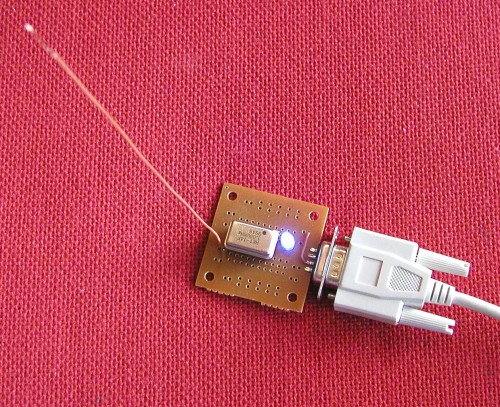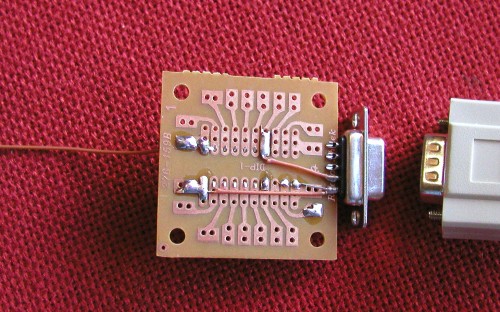How does it do that?
Most of the important concepts for this project have been covered in other sections of this chapter.
The computer provides power to the oscillator through the DTR pin of the serial port. The program turns the DTR signal on and off* which causes the oscillator to turn on and off in return.
To make the signal audible in a cheap AM radio* the computer turns the power to the oscillator on and off 1*000 times per second while sending the dots and dashes of the code* and leaves it off in between the dots or dashes. This modulates the radio signal at a frequency your ears can hear. In AM Low Tone the audio frequency is 500 times per second.
In the CW mode (CW stands for Continuous Wave)* the computer does not modulate the radio signal. It just turns on the oscillator long enough for the dot or dash to be sent. In this case* the receiver does the work of converting the signal into an audible tone your ears can hear* by using a circuit called a beat frequency oscillator. Your short-wave radio may have a switch labelled BFO* or SSB* or CW that allows this circuit to operate.
Some nicer packaging
The computer program turns on DTR and also another signal called RTS* while sending the dots and dashes. In the version of the transmitter shown below* we have mounted a 14 pin socket to a general purpose circuit board from Radio Shack* and plugged the oscillator into that. A blue light emitting diode is connected to the RTS pin of the serial port connector (pin 7). The LED flashes Morse code along with the oscillator* making an eye-catching project.

The serial port connector is wedged onto the printed circuit board by placing the board between the pins

The wires that connect the serial port connector to the oscillator and the LED also serve to hold the connector onto the printed circuit board.
The antenna in this case is a 6 inch long wire. In CW mode* this wire is all that is needed to receive the signal anywhere in the house. A longer antenna will allow the whole block to receive the signal.
By replacing the 1 megahertz oscillator with a 28.322 megahertz oscillator* and connecting the transmitter to a large amateur radio antenna (10 meter beam)* I was able to send signals from California to Texas. To do that* you will want to get an amateur radio license.